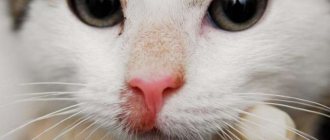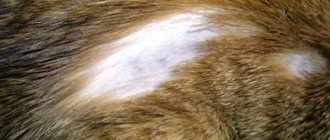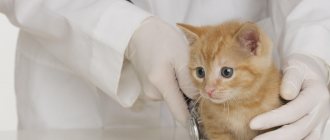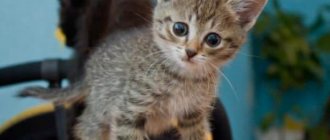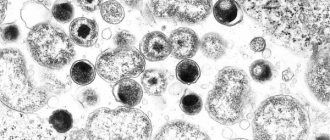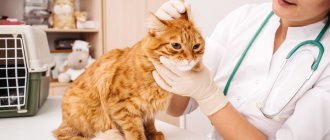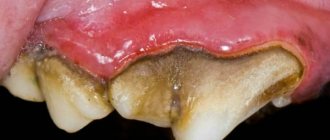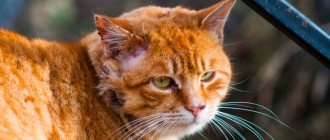It so happens that cats suffer from approximately the same diseases as people. They often face the problem of tartar deposits. What is tartar? These are calcareous deposits with a fairly stable structure that grow quickly and give the tooth a yellow or dark brown color.
Reasons for appearance
Tartar is formed from saliva, food debris, and mineral salts. The plaque, at first insignificant, subsequently thickens and hardens, acquiring a yellowish-brown tint. The localization of formations is in the areas of the back teeth and fangs. This is a long process, sometimes lasting six months.
The following factors contribute to the appearance of tartar:
- Dishes from the master's table, soft food. Lack of dry food.
- Metabolic disorders (salt and mineral).
- Malocclusion.
- Anomalies of the dentition.
- Avitaminosis.
- Poor care of teeth and gums.
- Heredity.
The appearance of formations on teeth should not be ignored: calcified plaque creates a favorable environment for pathogenic microorganisms. In addition, the harder it is, the more difficult it is to clean it later.
What is tartar on dogs' teeth?
The process begins with the appearance of plaque on the enamel of the front surface of the teeth or at the very gums. The mass consists of food debris mixed with saliva and serves as an excellent environment for the development of bacteria. Over time, this mixture compacts, and after 4-6 months it hardens to the state of stone.
A dog with healthy teeth feels great
For your information! Initially, the color of the soft coating is light yellow. As it hardens, it darkens, becoming dark brown or even black.
Possible reasons for the appearance
There are several reasons why tartar appears on dogs' teeth. Here are the most common ones:
- poor nutrition;
- violation of water-salt metabolism;
- acidity level in saliva;
- sugar abuse;
- malocclusion and other problems of dental structure;
- lack of hygiene procedures.
Preventive actions boil down to identifying what caused the formation of the stone and eliminating this cause.
Clinical picture
Tartar can be subgingival or supragingival.
Subgingival tumors form under the gum. They can only be detected during an examination, which is carried out using dental instruments. The stones fit tightly to the neck of the tooth, are hard, dark brown, and sometimes black.
Supragingival stones are accordingly formed above the gum and are visible even with the naked eye. They are easily separated from the enamel, have a porous but solid structure, and a yellowish tint.
Clinical picture: the appearance of bad odor from the mouth, inflammation and bleeding of the gums, loose teeth. The animal experiences severe discomfort, refuses food, especially solid food, and loses weight.
Diagnostics in a veterinary clinic
For an experienced veterinarian, diagnosing tartar in cats is not difficult. In a veterinary clinic, this is carried out using a routine examination.
The cat owner can determine for himself whether his pet has this problem. To do this, just carry out a simple test: moisten a cotton swab with Lugol’s or iodine solutions (5%) and rub your teeth with it, grabbing the gums adjacent to them.
After performing this manipulation, the stone is clearly visible.
Prevention
To prevent your cat from having a similar problem, it is necessary to prevent tartar at home, which includes simple rules:
- Regular brushing of your cat's teeth will help avoid these troubles. Moreover, you need to start teaching your kitten about oral hygiene, because they get used to it more easily than adult cats.
- A balanced diet also prevents problems with stone formation. Dry food has proven itself very well; it contains dietary fiber, which has a beneficial effect on the surface of the teeth and provides additional cleaning.
- Currently, there are commercially available foods that contain polyphosphate, which creates a protective film on the teeth that protects them from plaque.
- Taking vitamins that contribute to the overall health of your pet, and the oral cavity is no exception.
- Gastrointestinal diseases lead to an imbalance in the alkaline balance in the cat’s mouth, so regular medical examinations are necessary to monitor the pet’s health.
- Regular dental examinations by a veterinarian are recommended as a preventive measure for various oral diseases.
Dry foods are not a panacea for the formation of tartar; they provide good protection against plaque formation only if oral hygiene is maintained.
At-risk groups
- Tartar in cats usually forms when it reaches an age over five years, especially if the animal’s oral cavity has not been properly cared for. Recently, this problem has also begun to occur in young animals; there is a correlation with the animal’s unbalanced food.
- In veterinary medicine, there is evidence that the most common breeds, such as Persian, Siamese, Scottish, are most predisposed to this disease. This is because sometimes unskilled breeders weaken the gene pool of these sought-after cats.
- Backyard cats living in rural areas and eating natural food are less susceptible to this disease. They have stronger immunity than their elite relatives.
By carefully caring for your cat, you can avoid problems such as the formation of tartar in your pet. If such a problem affects your pet, then the help of a qualified specialist is necessary.
We recommend reading: How to properly brush your cat’s teeth at home?
Treatment method and prognosis
Tartar removal is carried out in a veterinary clinic. The procedure is performed under general anesthesia. The duration of the operation is 1 hour.
Two methods are used to remove mineralized deposits on the surface of teeth - ultrasonic and mechanical.
For mechanical cleaning, dental instruments are used and it is carried out manually. The procedure is inexpensive, but has a significant drawback - possible damage to the enamel. That is why veterinarians recommend mechanical removal only in cases of complete contraindication to general anesthesia.
The ultrasound method is a modern and absolutely painless procedure performed using special equipment. Ultrasound is able to cope with the hardest calcareous deposits, peeling them off from the tooth tissue.
During the procedure, not only plaque is removed, but also pathological microorganisms are destroyed, periodontal pockets and interdental spaces are cleaned. The method is absolutely safe, since the enamel is not damaged, and anesthesia is used only to immobilize the pet.
Since after brushing the teeth, the enamel acquires a rough surface, which creates the preconditions for the re-formation of stone, polishing is necessary. Ideal enamel smoothness is achieved using special pastes and brushes.
Fluoridation (applying a special varnish or gel with sodium fluoride to the teeth) is a desirable, but optional step in cleaning tartar. With this procedure, tooth hypersensitivity is reduced and the enamel is strengthened, making it less vulnerable to caries.
Plaque prevention
As for preventive measures, it is enough to follow simple rules so that you will never again wonder how to remove tartar at home. Proper care includes the following:
- Complete cessation of unhealthy habits. We are talking about smoking, consumption of excessive amounts of sweets, coffee and black tea that affect dental health.
- Quality food. Regular consumption of fresh vegetables, herbs and dairy products helps cleanse the enamel.
- Purchase a new toothbrush every month.
- Regular visits to the dentist. It is recommended to visit a dentist once every six months.
What to do at home
You should not try to remove tartar on your own, as this can cause serious injury to your pet. The procedure is carried out exclusively in a veterinary clinic under general anesthesia.
For prevention purposes, it is advisable to periodically give your cat special food. Dry granules prevent plaque by binding calcium contained in saliva and provide complete mechanical cleaning of teeth.
Veterinarians note that in cats who consume medicated food, the layer of plaque decreases, its growth slows down, and in addition, the natural shade of tooth enamel is restored.
How is the procedure performed in the clinic?
The animal is given anesthesia, since the procedure is quite painful; it is also important for the doctor that the animal is in a calm state.
Seizures in cats - main causes, symptoms, first aid, treatment and choice of drugs (110 photos)Polycystic kidney disease in cats - causes, diagnosis and symptoms of the disease. Treatment options and prevention of kidney disease (95 photos)
Ascites in cats - first causes, treatment, symptoms and step-by-step description of the development of the disease (105 photos)
Possible complications
Tartar is a health hazard for your cat. As mineral deposits grow, they form a dental pocket and cause gum irritation.
In addition, it contributes to the appearance of dental diseases, such as gingivitis, caries, periodontitis, periodontitis, osteomyelitis, which, in turn, cause not only loosening and loss of teeth, but also purulent processes, sepsis, which create dangerous preconditions for death.
Types of Tartar
Tartar, as a rule, forms in places where saliva is washed; incisors and molars are susceptible to it. Sometimes these formations cover not one, but several teeth in a row. Dental stones are divided according to their location. They are:
- Supragingival. This type of deposit is located above the gum. It can be noticed during examination of the animal's oral cavity.
- Subgingival. These deposits are located on the root of the tooth, under the gum. It is impossible to notice it during inspection. It promotes the formation of places in the cat’s gums where bacteria accumulate. As a result, loosening and loss of the tooth occurs.


